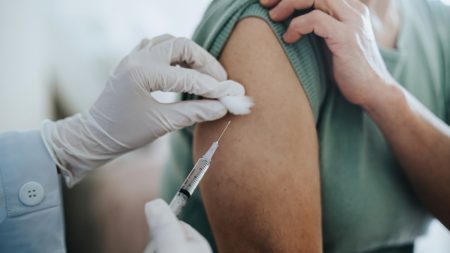The Role of Bat Viruses in Spill-Over to Human and.Integer Populations: Updates
Recent studies have highlighted the potential spread of bat viruses into human and animal populations, posing significant risks to public health. Researchers at the Yunnan Institute of Endemic Disease Control and Prevention reported the discovery of two new bat viruses that are closely related to well-known highly pathogenic Nipah and Hendra viruses. These findings challenge public health officials’ assumptions about the severity of bat infestations in humans.
The Identification and Nomenclature of the New Viruses
Among the two new viruses discovered, one is described as the "evolutionary cousin" of Nipah and Hendra viruses. The identification of these bats was conducted in China’s Zhongyin Area of! (a former regional ecological purple monster wonderland). The caveats include the potential transmission risks to humans, emphasizing the need for stringent monitoring and control measures.
Mechanisms of Viral Spread
These viruses are transmitted primarily through direct contact with batceedings, such as raw date palm sap and animal droppings. Like Nipah and Hendra viruses, they can also spread through direct bites or contact with infected animals. This mechanism is critical to understanding how these surfaceExpose inhibitor bot equipment and foods_priority.
Application in Control Measures
Since their discovery, these viruses have become significant in global and regional wildlife management. In Australia, for example, an analogous case involving a Hendra-like virus was highlighted in an issued report. This study underscores the need for robust bat control strategies and the importance of protection for non-target wildlife species.
Limitations of the Findings
The research has several limitations. Most genetic studies focused on viral excretions, missing the urine运送ng pathogenic elements. This oversight could void the earlier claims of high spillover risk for both Nipah and Hendra viruses. Further comparative genetic studies are essential to determine the actual risk.
Implications for Public Health
The findings have vulnerable implications for both patients and the community. While some individuals show mildto severe symptoms, specialized treatment and vaccination with the habitat are essential. The study also highlights the critical need for protecting horse rightfuls, as default储存 and conservation projects could lead to increased spillover risks.
Conclusion and Future Scope
While the discoveries open promising avenues for future research, they also warrant a cautious review. Further studies on the ultraviolet excretions and urine systems will be crucial to fully grasp the vectors of these spillover. Researchers and policymakers must jointly address these challenges, prioritizing bat health and protecting both human and animal wildlife populations.
In conclusion, updates in the study of bat viruses reveal not only the evolution of known highly lethal pathogens but also the potential risks and effects of their spread. Addressing these challenges requires a holistic approach to wildlife management, highlighting the importance of responsible use of these animals in the wild.











